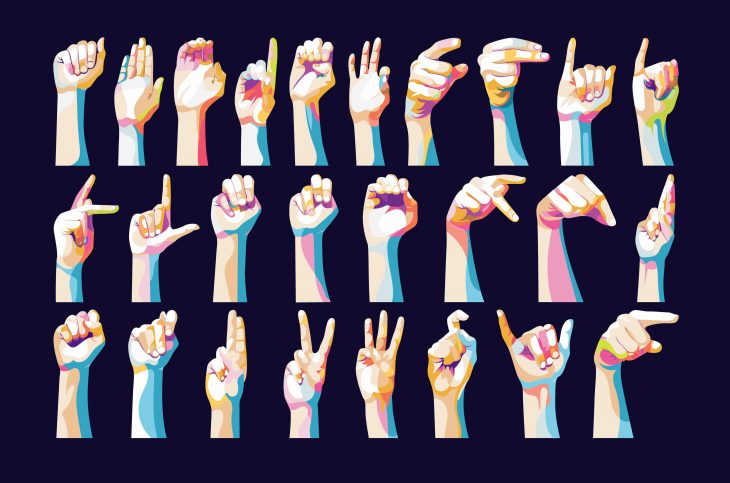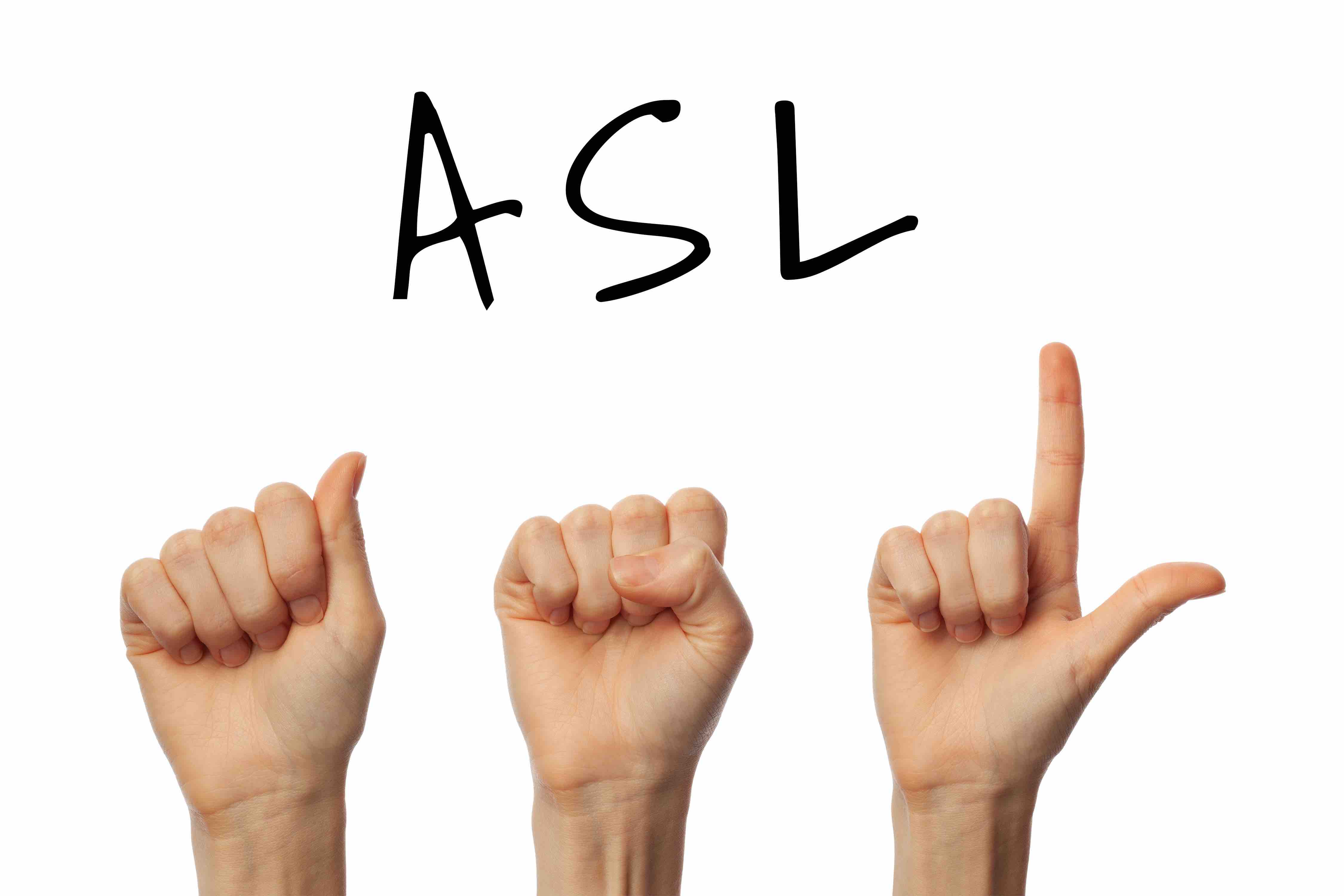
American Sign Language (ASL) is a vibrant and expressive visual language used by the Deaf community in the United States and parts of Canada. In this article, we’ll delve into 20 fascinating facts about ASL, exploring its history, linguistic features, and cultural significance. Join us on a journey through the captivating world of ASL and discover the beauty of sign language.
A Complete Language
ASL is a complete, natural language with its own grammar and syntax. It is not a mere gestural representation of English but a distinct linguistic system with its own rules and structure.
Visual-Gestural Language
ASL is a visual-gestural language, relying on the hands, facial expressions, and body movements to convey meaning. It is a highly expressive and dynamic language that utilizes the entire body as a tool for communication.
Origin and Evolution
ASL evolved from French Sign Language (LSF), which was introduced to the United States in the early 19th century by Thomas Gallaudet, a pioneer in Deaf education. Over time, ASL developed its own unique characteristics and vocabulary.
Variation and Regional Dialects
Similar to spoken languages, ASL exhibits variation and regional dialects. Different regions within the United States may have variations in signs and certain linguistic features, reflecting the diversity of the Deaf community.
Manual Alphabet

ASL incorporates a manual alphabet known as “fingerspelling.” Fingerspelling uses handshapes to represent the letters of the English alphabet and is used for names, proper nouns, or words without established signs.
ASL Poetry and Storytelling
ASL is a beautiful medium for poetry and storytelling. Deaf poets and storytellers use the rich visual nature of the language to create captivating narratives that resonate with both Deaf and hearing audiences.
Iconicity in Signs
ASL utilizes iconic signs, where the form of the sign visually represents the meaning or concept it conveys. This iconicity enhances the visual and expressive nature of the language.
Facial Expressions and Non-Manual Markers
Facial expressions and non-manual markers play a crucial role in ASL, providing grammatical and semantic information. They convey nuances, emotions, and inflections that complement the signs and add depth to the communication.
Importance of Eye Contact
Eye contact is vital in ASL conversations. It helps maintain visual connection, enables the recipient to follow the signer’s facial expressions and body movements, and is considered a fundamental aspect of effective communication in the Deaf community.
Deaf Culture and ASL
ASL is not just a language but an integral part of Deaf culture. It serves as a means of communication, identity, and cultural expression for the Deaf community, fostering a sense of belonging and shared experiences.
ASL Interpreters
ASL interpreters play a crucial role in facilitating communication between the Deaf community and hearing individuals. They are highly skilled professionals trained to accurately interpret spoken language into ASL and vice versa.
Bilingualism and Biculturalism
Many Deaf individuals in the United States are bilingual and bicultural, having proficiency in both ASL and English. This bilingualism allows for effective communication and fosters a connection with both the Deaf and hearing worlds.
ASL Linguistics Research
Linguists study ASL to explore its grammatical structures, sociolinguistic aspects, and its contribution to the field of linguistics. Research in ASL linguistics helps further our understanding of sign languages as complex and legitimate linguistic systems.
Accessibility and Inclusivity
ASL plays a crucial role in promoting accessibility and inclusivity for the Deaf community. It bridges communication barriers, allowing Deaf individuals to fully participate in various domains of life, including education, employment, and social interactions.
ASL Storytelling Traditions
ASL has a rich storytelling tradition passed down through generations. Storytellers captivate audiences with their vivid storytelling techniques, utilizing the expressive power of ASL to engage and entertain listeners.
ASL in Education

ASL is recognized as a distinct language and can fulfill foreign language requirements in educational settings. It is taught in schools and universities, contributing to the preservation and recognition of ASL as a vital linguistic resource.
ASL Literature
ASL literature encompasses various forms of creative expression, including poetry, storytelling, and visual performances. It represents the unique literary traditions and creative expression within the Deaf community.
ASL in Popular Culture
ASL has gained recognition in popular culture through its appearance in films, television shows, and performances. Its expressive qualities and visual impact have made it a captivating and engaging language to showcase in various forms of media.
ASL Music Interpretation
ASL interpretation of music adds a visual and dynamic dimension to musical performances. ASL interpreters skillfully convey the rhythm, melody, and emotions of songs through expressive signing, allowing Deaf individuals to connect with music on a profound level.
ASL as a Global Language
While ASL is primarily used in the United States and parts of Canada, sign languages exist worldwide, each with its own unique characteristics. ASL contributes to the global community of sign languages and the recognition of sign languages as essential components of human diversity.
Conclusion
In conclusion, ASL is a vibrant and expressive visual language that serves as a vital means of communication, cultural expression, and identity for the Deaf community. Its rich linguistic features, historical evolution, and cultural significance make ASL an integral part of the diverse tapestry of human languages.
Frequently Asked Questions (FAQs)
Can hearing individuals learn ASL?
Yes, hearing individuals can learn ASL. ASL classes and resources are available for individuals who wish to learn and communicate using this visual language. Learning ASL fosters inclusivity and promotes effective communication with the Deaf community.
How long does it take to become fluent in ASL?
The time it takes to become fluent in ASL varies depending on individual dedication, practice, and immersion in the language. Like any language, achieving fluency in ASL requires ongoing commitment and consistent exposure to the language.
Is ASL universal?
No, ASL is not a universal sign language. Sign languages vary worldwide, with each country or region having its own unique sign language. ASL is specific to the United States and parts of Canada.
Can ASL be used by individuals with hearing impairments who can speak?
Yes, ASL can be used by individuals with hearing impairments, regardless of their ability to speak. ASL provides an effective means of communication for individuals who rely on visual language to convey their thoughts and interact with others.
Are there online resources available to learn ASL?
Yes, there are numerous online resources, courses, and video tutorials available to learn ASL. These resources provide interactive learning experiences and help individuals develop proficiency in ASL at their own pace.
Was this page helpful?
Our commitment to delivering trustworthy and engaging content is at the heart of what we do. Each fact on our site is contributed by real users like you, bringing a wealth of diverse insights and information. To ensure the highest standards of accuracy and reliability, our dedicated editors meticulously review each submission. This process guarantees that the facts we share are not only fascinating but also credible. Trust in our commitment to quality and authenticity as you explore and learn with us.
